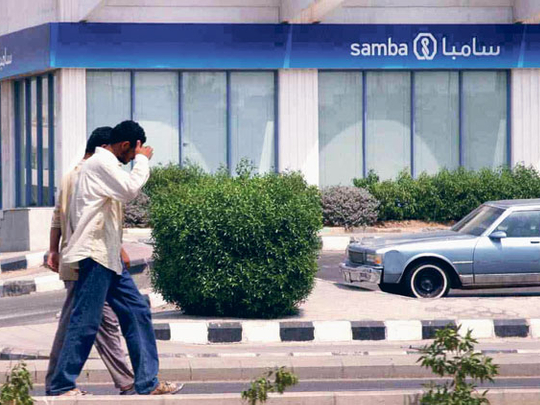Dubai: Faced with tough economic conditions following the sharp fall in oil prices and coronavirus-related economic disruptions, leading Saudi banks are facing challenges on profitability and asset quality that are getting reflected in their credit rating outlook.
In a recent move, credit rating agency Fitch revised the outlooks on eight Saudi banks’ Long-Term Issuer Default Ratings to Negative from Stable while retaining the ratings at ‘BBB+’.
The banks are Riyad Bank, Arab National Bank (ANB), Banque Saudi Fransi (BSF), Alinma, Saudi Investment Bank (SAIB), Bank Aljazira (BAJ), The Saudi British Bank (SABB) and Gulf International Bank – Saudi Arabia (GIB SA).
Three other banks that were placed under negative watch list earlier such as National Commercial Bank (NCB), Al Rajhi Bank (ARB) and SAMBA Financial Group (SAMBA) have been assigned negative outlook by Fitch in its latest rating update.
Impact of sovereign ratings
Fitch’s latest rating actions follow a similar action on Saudi Arabia’s sovereign rating earlier this month affirming it at ‘A’ while maintaining a negative outlook.
While rating agency Moody’s had retained its rating of A1, it changed the outlook to negative from stable on the Government of Saudi Arabia’s issuer rating in May this year reflecting increased downside risks to fiscal strength.
Standard & Poor’s, on the other hand, has affirmed Saudi Arabia’s ‘A-/A-2’ sovereign credit rating with a stable outlook considering the country’s strong net asset positions and its economic prospects over the next three years.
Explaining the rationale for it latest rating outlooks for leading Saudi banks, Fitch said the changes reflect continued pressures on the operating environment resulting from lower oil prices and low growth in non-oil sectors. These are likely to persist in the medium term and put pressure on the banks’ asset quality and profitability, in the agency’s opinion.
Government support
Despite changing the outlook of leading banks to negative, Fitch said Saudi has strong ability to support the banking system, given large, albeit decreasing, external reserves. It also reflects a long record of support for Saudi banks, irrespective of their size, franchise, funding structure and level of government ownership.
“We see high contagion risk among domestic banks given that the market is fairly small and interconnected. We believe this is an added incentive to provide state support to any Saudi bank if needed, to maintain market confidence and stability,” Fitch said.
Signs of recovery
Amidst tough operating conditions such as COVID-19 related lockdowns, lower interest rate regime and dropping oil prices, listed banks reported better than expected third-quarter results. Cumulatively, the 11 banks reported 11.88 billion Saudi riyals in net profit for the quarter ended September, down 5 per cent compared to the year-ago period, thanks to lower than expected loan loss provisions.
Read more
Saudi banks’ net interest margins (NIM) are expected remain under pressure, as system-wide interest rates are at multi-year lows. NIM fell by 18 bps to 3.01 per cent in the second quarter of 2020 on a quarter on quarter basis, largely due to 61 bps decline in yield on credit caused by the lower interest rate environment. Seven out of 10 banks reported a decline in the NIM.



